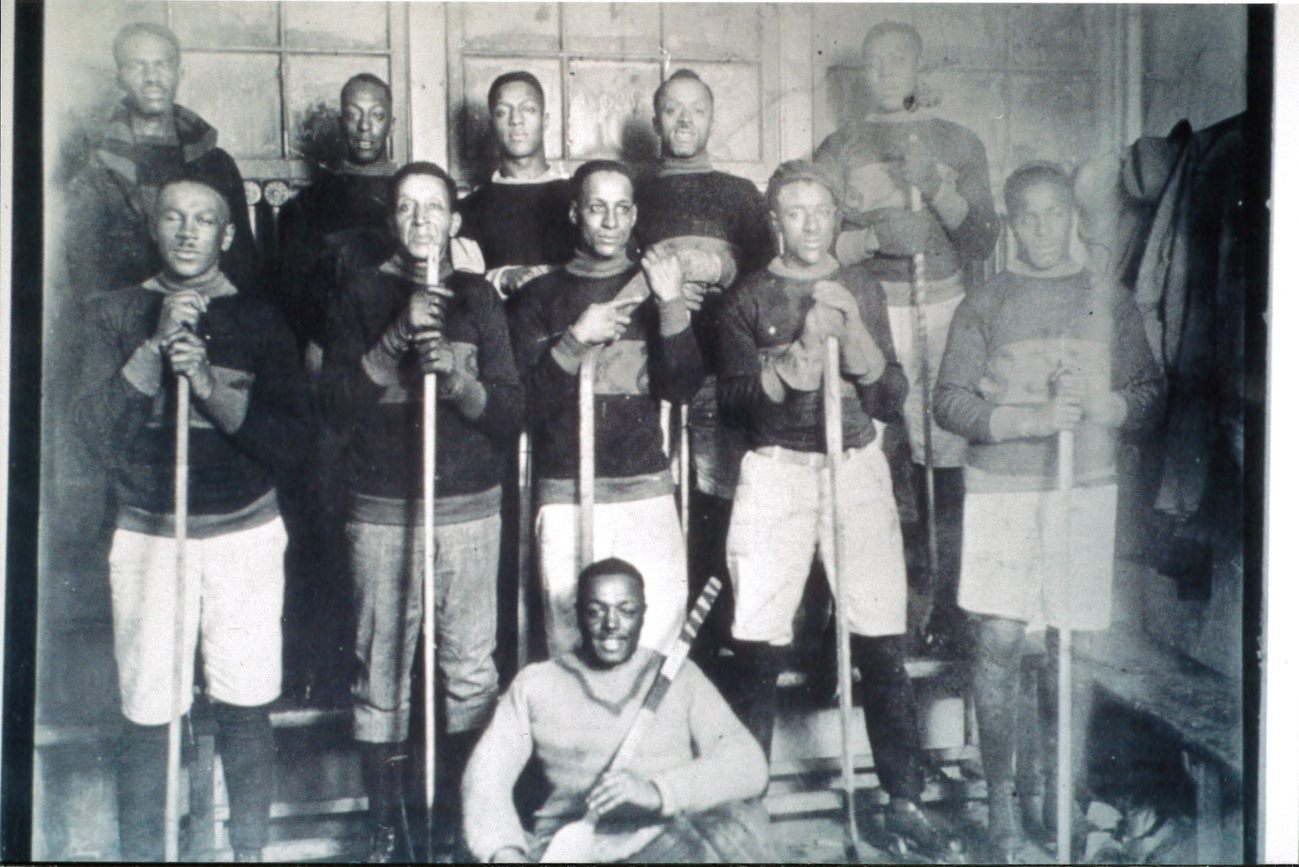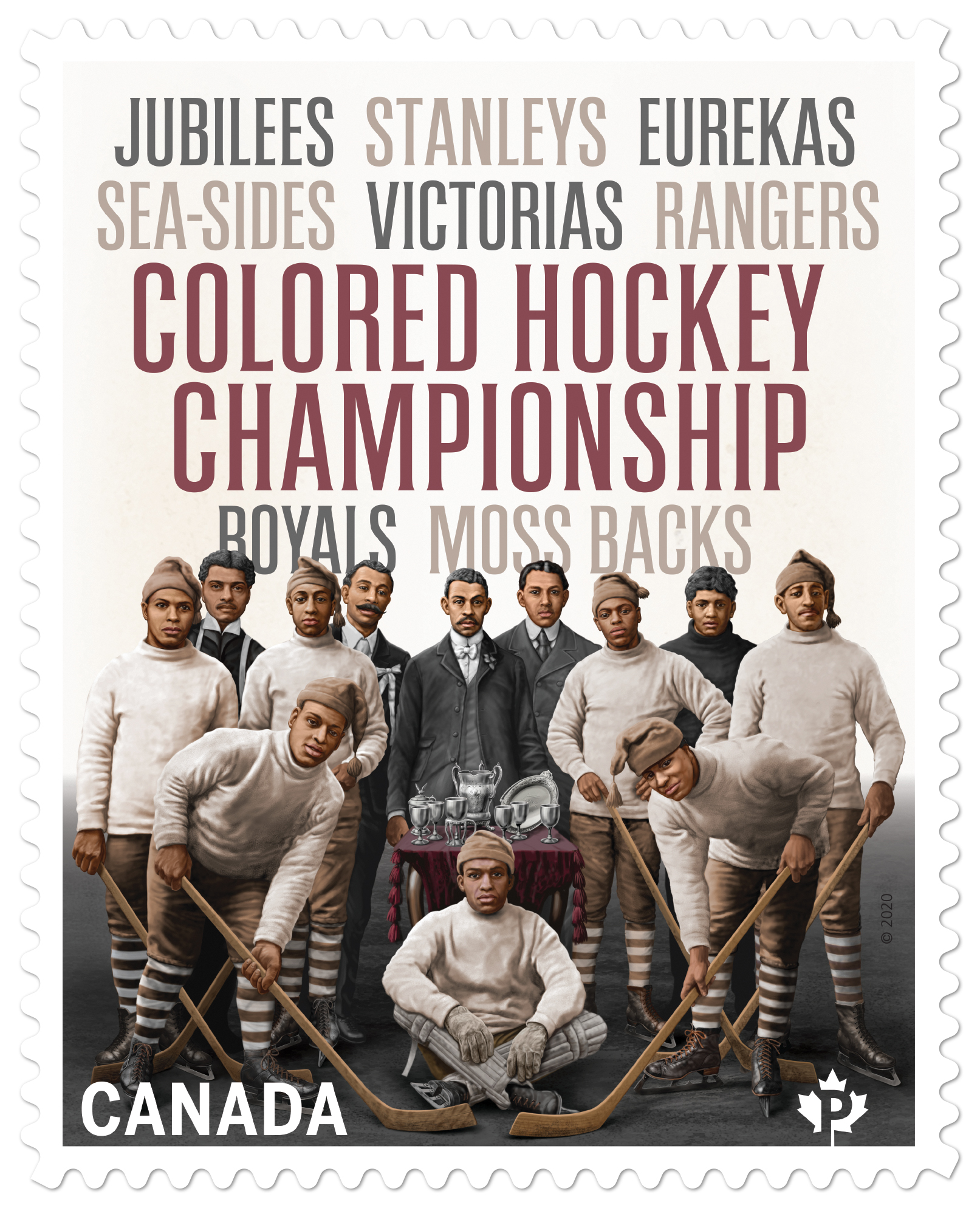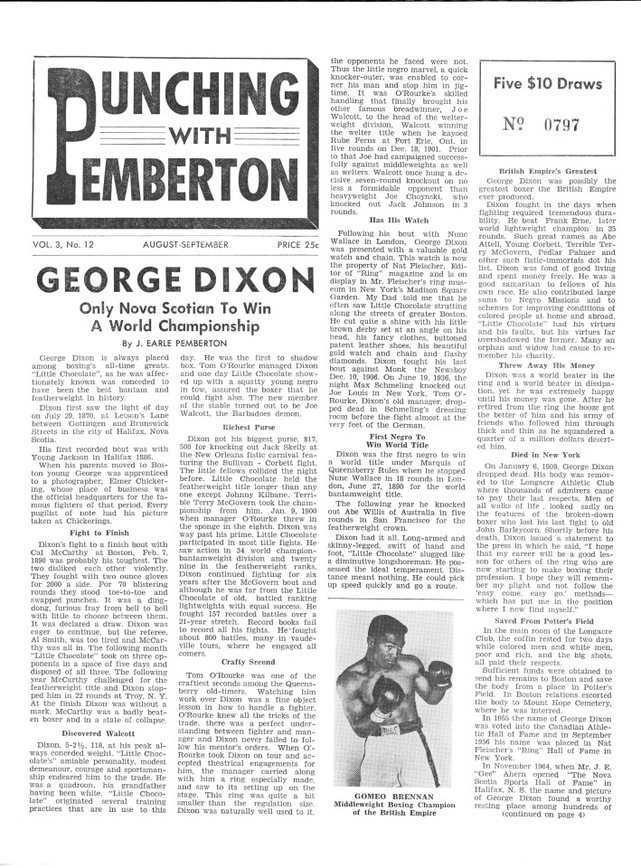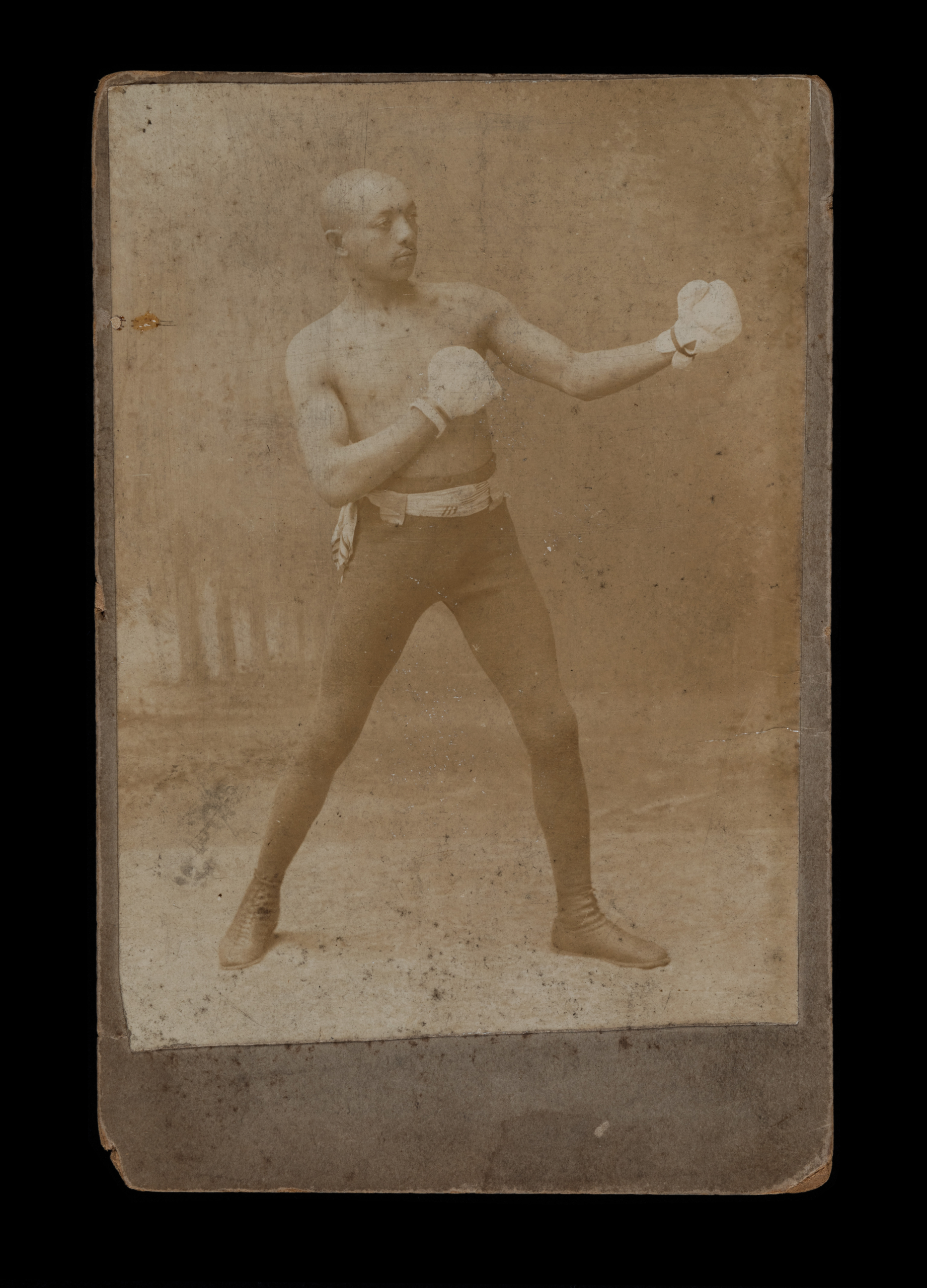Sports
Photograph
Image
Video
Audio
 Activities
Activities
LOOK
What are your first thoughts about these two sports in African Nova Scotian communities? What stands out or surprises you about the players’ experiences?
THINK
Why was it important for opportunities to be given to Black athletes? How did these opportunities help build African Nova Scotian communities?
DO
Are you able to find other Black Canadian athletes who shared similar stories to CHLM players or George Dixon? What makes them alike, and what has changed?
Details
 Materials
Materials - Photograph
Historical Context
Choose one of the three levels below to match your needs.
- These objects reflect the sporting history and achievements of African Nova Scotians.
- The Colored Hockey League of the Maritimes (CHLM) was an all-Black Halifax hockey league (1895–1930). The Africville Sea-Sides won two championships. Fans loved the dynamic, fast play.
- Africville native George Dixon (1870–1908) was the first Black world boxing champion. He developed innovative training techniques, including shadowboxing.
- Dixon supported anti-discrimination causes. He was inducted into the International Boxing Hall of Fame in 1990.
Scroll through the media carousel to see more images of African Nova Scotian athletes.
These objects reflect the sporting history and achievements of African Nova Scotians.
The Colored Hockey League of the Maritimes (CHLM) was an all-Black hockey league (1895–1930) in Halifax. At its peak, it boasted more than a dozen teams and hundreds of players. The photograph features the champion Africville Sea-Sides. Canada Post commemorated the league in 2020.
CLHM teams had to defer to the schedule of White players, often on poor ice. Despite this, fans loved the league’s fast play.
African Nova Scotians also excelled at boxing. Africville native George Dixon (1870–1908) was the first Black world champion. He developed innovative training techniques, including shadowboxing.
Dixon supported anti-discrimination causes. He was inducted into the International Boxing Hall of Fame in 1990.
These objects represent some of the sports history and achievements of African Nova Scotians.
The Colored Hockey League of the Maritimes (CHLM) was an all-Black hockey league. Established in Halifax, it ran from 1895 until 1930. Founded 22 years before the National Hockey League (NHL), the CHLM included teams such as the Dartmouth Jubilees, Truro Victorias, Charlottetown West End Rangers, Africville Sea-Sides, Hammond Plains Moss Backs, and Amherst Royals.
At its peak, the all-Black league boasted more than a dozen teams and hundreds of players. The photograph shows the 1921 Africville Sea-Sides, a team that won CHLM championships in 1901 and 1902. The stamp featured here was released by Canada Post in February 2020 to commemorate the league.
The CHLM was first organized by Baptist church leaders and was aimed at attracting young Black men to Sunday service with the promise of a weekly hockey game. The CHLM also formed due to racial divides in Canadian sport. Although many different ethnic and religious groups played hockey — as did both men and women — they rarely played together.
CHLM teams were on the ice from January to March most years, after the regular season for white male players was mostly over. This often meant melting ice surfaces and sub-optimal conditions. Fans went to games because the CHLM became known for its fast, dynamic play.
The popularity of the league ebbed and flowed in the early 1900s. There were no games during the First World War, but the league enjoyed a minor renaissance in the 1920s and 1930s.
Boxing was another sport at which African Nova Scotians excelled. One of the most famous African Nova Scotian boxers was George Dixon (1870–1908). Dixon was the first Black world champion in boxing history, and the first Canadian to ever win a world championship.
Born in Africville, Dixon competed as a bantamweight and featherweight — primarily out of Boston, which was a major boxing hub at the time. Dixon’s contributions to the sport also extended beyond the ring. He is credited with inventing innovative training techniques — most notably shadowboxing — which remain common practice in the sport today.
As a Black athlete, Dixon confronted racial prejudice throughout his life and career. He used his platform and popularity as world champion to create opportunities for Black boxers and Black boxing fans, and regularly contributed his in-ring earnings to causes that combatted discrimination and supported Black communities.
In 1990, Dixon was inducted into the International Boxing Hall of Fame. In 2017, he was also ranked No. 6 on the Nova Scotia Sport Hall of Fame’s list of the Top 15 Nova Scotian athletes of all time. The George Dixon Community Centre in Halifax is named in his honour.
- These objects reflect the sporting history and achievements of African Nova Scotians.
- The Colored Hockey League of the Maritimes (CHLM) was an all-Black Halifax hockey league (1895–1930). The Africville Sea-Sides won two championships. Fans loved the dynamic, fast play.
- Africville native George Dixon (1870–1908) was the first Black world boxing champion. He developed innovative training techniques, including shadowboxing.
- Dixon supported anti-discrimination causes. He was inducted into the International Boxing Hall of Fame in 1990.
Scroll through the media carousel to see more images of African Nova Scotian athletes.
These objects reflect the sporting history and achievements of African Nova Scotians.
The Colored Hockey League of the Maritimes (CHLM) was an all-Black hockey league (1895–1930) in Halifax. At its peak, it boasted more than a dozen teams and hundreds of players. The photograph features the champion Africville Sea-Sides. Canada Post commemorated the league in 2020.
CLHM teams had to defer to the schedule of White players, often on poor ice. Despite this, fans loved the league’s fast play.
African Nova Scotians also excelled at boxing. Africville native George Dixon (1870–1908) was the first Black world champion. He developed innovative training techniques, including shadowboxing.
Dixon supported anti-discrimination causes. He was inducted into the International Boxing Hall of Fame in 1990.
These objects represent some of the sports history and achievements of African Nova Scotians.
The Colored Hockey League of the Maritimes (CHLM) was an all-Black hockey league. Established in Halifax, it ran from 1895 until 1930. Founded 22 years before the National Hockey League (NHL), the CHLM included teams such as the Dartmouth Jubilees, Truro Victorias, Charlottetown West End Rangers, Africville Sea-Sides, Hammond Plains Moss Backs, and Amherst Royals.
At its peak, the all-Black league boasted more than a dozen teams and hundreds of players. The photograph shows the 1921 Africville Sea-Sides, a team that won CHLM championships in 1901 and 1902. The stamp featured here was released by Canada Post in February 2020 to commemorate the league.
The CHLM was first organized by Baptist church leaders and was aimed at attracting young Black men to Sunday service with the promise of a weekly hockey game. The CHLM also formed due to racial divides in Canadian sport. Although many different ethnic and religious groups played hockey — as did both men and women — they rarely played together.
CHLM teams were on the ice from January to March most years, after the regular season for white male players was mostly over. This often meant melting ice surfaces and sub-optimal conditions. Fans went to games because the CHLM became known for its fast, dynamic play.
The popularity of the league ebbed and flowed in the early 1900s. There were no games during the First World War, but the league enjoyed a minor renaissance in the 1920s and 1930s.
Boxing was another sport at which African Nova Scotians excelled. One of the most famous African Nova Scotian boxers was George Dixon (1870–1908). Dixon was the first Black world champion in boxing history, and the first Canadian to ever win a world championship.
Born in Africville, Dixon competed as a bantamweight and featherweight — primarily out of Boston, which was a major boxing hub at the time. Dixon’s contributions to the sport also extended beyond the ring. He is credited with inventing innovative training techniques — most notably shadowboxing — which remain common practice in the sport today.
As a Black athlete, Dixon confronted racial prejudice throughout his life and career. He used his platform and popularity as world champion to create opportunities for Black boxers and Black boxing fans, and regularly contributed his in-ring earnings to causes that combatted discrimination and supported Black communities.
In 1990, Dixon was inducted into the International Boxing Hall of Fame. In 2017, he was also ranked No. 6 on the Nova Scotia Sport Hall of Fame’s list of the Top 15 Nova Scotian athletes of all time. The George Dixon Community Centre in Halifax is named in his honour.
Summary
- These objects reflect the sporting history and achievements of African Nova Scotians.
- The Colored Hockey League of the Maritimes (CHLM) was an all-Black Halifax hockey league (1895–1930). The Africville Sea-Sides won two championships. Fans loved the dynamic, fast play.
- Africville native George Dixon (1870–1908) was the first Black world boxing champion. He developed innovative training techniques, including shadowboxing.
- Dixon supported anti-discrimination causes. He was inducted into the International Boxing Hall of Fame in 1990.
Scroll through the media carousel to see more images of African Nova Scotian athletes.
Essential
These objects reflect the sporting history and achievements of African Nova Scotians.
The Colored Hockey League of the Maritimes (CHLM) was an all-Black hockey league (1895–1930) in Halifax. At its peak, it boasted more than a dozen teams and hundreds of players. The photograph features the champion Africville Sea-Sides. Canada Post commemorated the league in 2020.
CLHM teams had to defer to the schedule of White players, often on poor ice. Despite this, fans loved the league’s fast play.
African Nova Scotians also excelled at boxing. Africville native George Dixon (1870–1908) was the first Black world champion. He developed innovative training techniques, including shadowboxing.
Dixon supported anti-discrimination causes. He was inducted into the International Boxing Hall of Fame in 1990.
In-Depth
These objects represent some of the sports history and achievements of African Nova Scotians.
The Colored Hockey League of the Maritimes (CHLM) was an all-Black hockey league. Established in Halifax, it ran from 1895 until 1930. Founded 22 years before the National Hockey League (NHL), the CHLM included teams such as the Dartmouth Jubilees, Truro Victorias, Charlottetown West End Rangers, Africville Sea-Sides, Hammond Plains Moss Backs, and Amherst Royals.
At its peak, the all-Black league boasted more than a dozen teams and hundreds of players. The photograph shows the 1921 Africville Sea-Sides, a team that won CHLM championships in 1901 and 1902. The stamp featured here was released by Canada Post in February 2020 to commemorate the league.
The CHLM was first organized by Baptist church leaders and was aimed at attracting young Black men to Sunday service with the promise of a weekly hockey game. The CHLM also formed due to racial divides in Canadian sport. Although many different ethnic and religious groups played hockey — as did both men and women — they rarely played together.
CHLM teams were on the ice from January to March most years, after the regular season for white male players was mostly over. This often meant melting ice surfaces and sub-optimal conditions. Fans went to games because the CHLM became known for its fast, dynamic play.
The popularity of the league ebbed and flowed in the early 1900s. There were no games during the First World War, but the league enjoyed a minor renaissance in the 1920s and 1930s.
Boxing was another sport at which African Nova Scotians excelled. One of the most famous African Nova Scotian boxers was George Dixon (1870–1908). Dixon was the first Black world champion in boxing history, and the first Canadian to ever win a world championship.
Born in Africville, Dixon competed as a bantamweight and featherweight — primarily out of Boston, which was a major boxing hub at the time. Dixon’s contributions to the sport also extended beyond the ring. He is credited with inventing innovative training techniques — most notably shadowboxing — which remain common practice in the sport today.
As a Black athlete, Dixon confronted racial prejudice throughout his life and career. He used his platform and popularity as world champion to create opportunities for Black boxers and Black boxing fans, and regularly contributed his in-ring earnings to causes that combatted discrimination and supported Black communities.
In 1990, Dixon was inducted into the International Boxing Hall of Fame. In 2017, he was also ranked No. 6 on the Nova Scotia Sport Hall of Fame’s list of the Top 15 Nova Scotian athletes of all time. The George Dixon Community Centre in Halifax is named in his honour.




